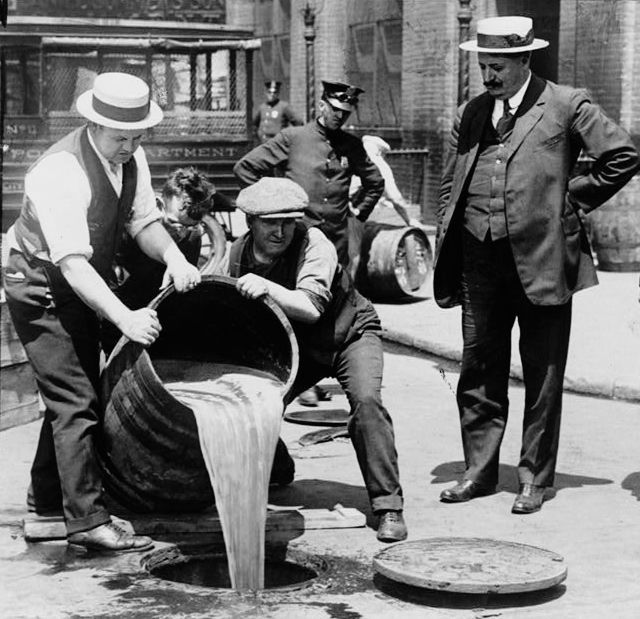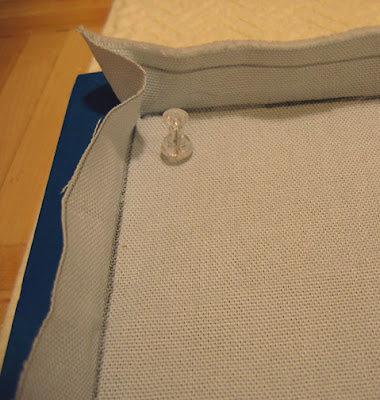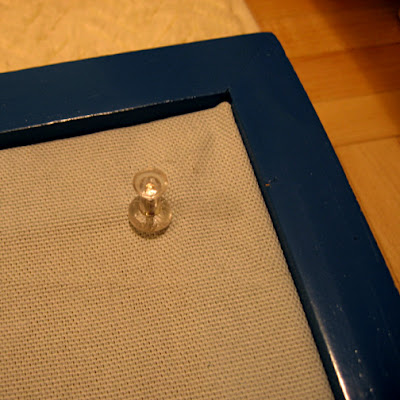I have to admit I was a little thrown by Dennis Lehane’s last book in the Coughlin series, Live By Night. The Given Day is Lehane’s best book and when he wrote it he said it was the first in a series which would follow multi-generations of a police family through Boston in the 20th […]
Add a CommentViewing: Blog Posts Tagged with: prohibition, Most Recent at Top [Help]
Results 1 - 13 of 13
Blog: Perpetually Adolescent (Login to Add to MyJacketFlap)
JacketFlap tags: mafia, tampa, dennis lehane, boardwalk empire, organized crime, Book Reviews - Fiction, world gone by, Books, book review, prohibition, Add a tag
Blog: OUPblog (Login to Add to MyJacketFlap)
JacketFlap tags: Books, History, american history, prohibition, America, 4th of July, independence day, *Featured, Kyle G. Volk, Moral Minorities and the Making of American Democracy, New York history, prohibitionists, Add a tag
By Kyle G. Volk
In 1855, the good citizens of the state of New York faced this very prospect. Since the birth of the republic, alcohol and Independence Day have gone hand in hand, and in the early nineteenth century alcohol went hand in hand with every day. Americans living then downed an average seven gallons of alcohol per year, more than twice what Americans drink now. In homes and workshops, churches and taverns; at barn-raisings, funerals, the ballot box; and even while giving birth — they lubricated their lives with ardent spirits morning, noon, and night. If there was an annual apex in this prolonged cultural bender, it was the Fourth of July, when many commemorated the glories of independence with drunken revelry.
Beginning in the 1820s, things began to change. A rising lot of middle-class evangelical Protestants hoped to banish the bottle not only from the nation’s birthday but from the nation itself. With the evidence of alcohol’s immense personal and social costs before them, millions of men and women joined the temperance crusade and made it one of America’s first grass-roots social movements. Reformers demonized booze and made “teetotalism” (what we call abstinence) a marker of moral respectability. As consumption levels began to fall by mid-century, activists sought to seal their reformation with powerful state laws prohibiting the sale of alcohol. They insisted — in true democratic fashion — that an overwhelming majority of citizens were ready for a dry America.
State legislators played along, initiating America’s first experiment with prohibition not in the well-remembered 1920s but rather in the 1850s. It was a time when another moral question — slavery — divided the nation, but it was also a time when hard-drinking Irish and German immigrants — millions of them Catholics — threatened to overwhelm Protestant America. With nativism in the air, 13 states enacted prohibition laws. Predicting the death of alcohol and the salvation of the nation, temperance reformers set out to see these laws enforced.
New York’s moment came in 1855. The state legislature passed a prohibition statute in the spring and chose the Fourth of July for the measure to take effect. If prohibition was going to work, it had to work on the wettest day of the year. The bold timing was not lost on contemporaries who imagined the “sensation” that would undoubtedly accompany a dry Independence Day. “Cannon will have a novel sound in the ears of some people” and “flags will have a curious look to some eyes,” the prohibitionist New York Times jibbed. American eyes and ears, of course, had long been impaired by “brandy smashes” and “gin slings.” But now a proper, sober celebration of the nation’s birth could proceed without alcohol’s irreverent influence.

Laborers dispose of liquor during Prohibition. Public domain via Wikimedia Commons.
A stiff cocktail of workingmen and entrepreneurs, immigrants, and native-born Americans, however, burst on to the scene to keep the Fourth of July, and every day thereafter, wet. These anti-prohibitionists condemned prohibition as an affront to their cultural traditions and livelihoods. To them, prohibition exposed the grave threat that organized moral reform and invasive state governments posed to personal liberty and property rights. It revealed American democracy’s despotic tendencies — what anti-prohibitionists repeatedly called the “tyranny of the majority.” Considering themselves an oppressed minority, liquor dealers, hotel keepers, brewers, distillers, and other alcohol-purveying businessmen led America’s first wet crusade. In the process, they became critical pioneers in America’s lasting tradition of popular minority-rights politics. As the Fourth of July approached, they initiated opinion campaigns, using mass meetings and the press to bombard the public with anti-prohibitionist propaganda that placed minority rights and constitutional freedom at the heart of America’s democratic experiment. They formed special “liquor dealer associations” and used them to raise funds, lobby politicos, hire attorneys, and determine a course of resistance once prohibition took effect.
In some locales their public-opinion campaigns worked as skittish officials refused to enforce the law. As the New York Times grudgingly observed of the Fourth of July in Manhattan, “The law was in no respect observed.” But elsewhere, officials threatened enforcement and reports of a dry Fourth circulated. In Yonkers, for example, there wasn’t “a drop of liquor to be had.” With prohibition enforced in Brooklyn, Buffalo, and elsewhere, anti-prohibitionists implemented their plan of civil disobedience — intentionally and peacefully resisting a law that they deemed unjust and morally reprehensible. They defiantly sold booze and hoped to be arrested so they could “test” prohibition’s constitutionality in court. Liquor dealer associations organized these efforts and guaranteed members access to their legal defense funds to cover the costs of fines and litigation. The battle had fully commenced.
In New York, as in other states, anti-prohibitionists’ activism paid off. Their efforts soon turned prohibition into a dead letter throughout the state, and they convinced New York’s Court of Appeals to declare prohibition unconstitutional. The Fourth of July had been a dry affair in many New York towns in 1855, but anti-prohibitionists ensured that the national birthday in 1856 was a wet one. Their temperance adversaries, of course, would persist and emerge victorious when national Prohibition in the form of the 18th Amendment took full effect in 1920. But anti-prohibitionists continued to counter with tactics intended to protect civil liberties and minority rights in America’s democracy. That Independence Day today remains a wet affair owes much to their resistance and to the brand of minority-rights politics they popularized in the mid-nineteenth century.
Kyle G. Volk is Associate Professor of History at the University of Montana. He is author of Moral Minorities and the Making of American Democracy, recently published by Oxford University Press.
Subscribe to the OUPblog via email or RSS.
Subscribe to only American history articles on the OUPblog via email or RSS.
The post What if the Fourth of July were dry? appeared first on OUPblog.
Blog: OUPblog (Login to Add to MyJacketFlap)
JacketFlap tags: 18th Amendment, Blaine Act, Oxford Encyclopedia of Food and Drink in America, effigy, editor andrew, food, History, US, nypl, prohibition, blaine, Food & Drink, hung, *Featured, andrew f. smith, repeal, Arts & Leisure, Add a tag

Old Man Prohibition hung in effigy from a flagpole as New York celebrated the advent Repeal after years of bootleg booze. Source: NYPL.
Your Score:
Your Ranking:
The second edition of The Oxford Encyclopedia of Food and Drink in America thoroughly updates the original, award-winning title, while capturing the shifting American perspective on food and ensuring that this title is the most authoritative, current reference work on American cuisine. Editor Andrew F. Smith teaches culinary hist ory and professional food writing at The New School University in Manhattan. He serves as a consultant to several food television productions (airing on the History Channel and the Food Network), and is the General Editor for the University of Illinois Press’ Food Series. He has written several books on food, including The Tomato in America, Pure Ketchup, and Popped Culture: A Social History of Popcorn in America. The Oxford Encyclopedia of Food and Drink is also available on Oxford Reference.
Subscribe to the OUPblog via email or RSS.
Subscribe to only food and drink articles on the OUPblog via email or RSS.
The post A quiz on Prohibition appeared first on OUPblog.
Blog: Book Love (Login to Add to MyJacketFlap)
JacketFlap tags: nonfiction, prohibition, BOB, Add a tag
Bootleg: Murder, Moonshine, and the Lawless Years of Prohibition by Karen Blumenthal, Flash Point, 2011, 160 pp, ISBN: 159643449X
Bootleg travels all the way back to the Pilgrims coming over on the Mayflower with their casks of beer and hard liquor. Then it works its way through the events leading to the 18th Amendment - aka Prohibition - and finally winds up with the 21st Amendment, which repealed the 18th.
All along the way, Bootleg is spiked with liquor-related trivia, and insight into the minds of those who fought so hard to free America from the grip of alcohol.
Review:
Oh BoB, I just never know what kind of book you're going to deliver. Graphic novels, fantasy, contemporary, NIVs... and always a few volumes of that divisive genre: nonfiction. Nonfiction can be so hit-or-miss for me. Some texts, like Amelia Lost, turn out to be surprisingly entertaining and revealing. Others, like Bootleg, not so much...
Bootleg covers a lot of ground - literally working its way from the Pilgrims up to MADD and Red Ribbon Week. But the vast majority of the text is focused on the 1920s, the era of Prohibition. Honestly, I learned a TON. Now I could tell you all about Al Capone, the bar smashing Carrie Nation (aka Mother Nation aka Carry A. Nation), and the role that mothers played in passing the 18th Amendment. I was especially interested in how the amendment completely backfired - rather than putting an end to the nation's widespread drinking problem, it did quite the opposite. Not only did "wets" get much more creative in their brewing, their children got in on the act too. Breaking the nation's highest law became a game for the whole family!
If Bootleg had just been edited a little further, I think I would be a big fan. But there were many chapters that just seemed redundant, and the passages that detailed the long, drawn-out political process quickly lost my attention. To be truthful, I really just skimmed the entire second half.
This book is going up against Between Shades of Gray tomorrow in the BOB. Do I really have to tell you that I'm cheering for BSoG? Lina for the WIN!
Recommendation:
Blog: Imagination-Cafe Blog (Login to Add to MyJacketFlap)
JacketFlap tags: prohibition, crimes, gambling, criminals, Capone, Add a tag
Al Capone...
...public enemy #1
...one of the most notorious criminals of all time
...humanitarian?
Al Capone has been portrayed throughout history as a bad man, however, there's good in all people. Deirdre Marie Capone is the grand niece of this infamous man and has shared a different and detailed back story in, Uncle Al Capone.
From Al Capone's efforts to integrate baseball, to what really happened to him while he served time on Alcatraz, Uncle Al Capone is a detailed and poignant look at Al's background. In this book Deirdre also shares memories of Uncle Al and what it was like growing with the stigma of the Capone name - it wasn't easy!
In addition, Deirdre also shares her grandmother's recipes for some of Al's favorite and traditional dishes.
Uncle Al Capone is an interesting and page-turning read. I enjoyed the details and true story of Capone from someone who was there and the never seen before pics from her own family album.
Check out Uncle Al Capone at Deirdre's web site at; http://www.unclealcapone.com/
Blog: OUPblog (Login to Add to MyJacketFlap)
JacketFlap tags: craft, beer, prohibition, Food & Drink, rice, grist, Anheuser-Busch, brewing, budweiser, garrett oliver, *Featured, Arts & Leisure, beers, american beer, lager, the oxford companion to beer, brewers, the the oxford, lagers, Add a tag
Rice is not the first thing that comes to mind when you are drinking a nice, cold beer. And if you’re a beer connoisseur, even less so. For many years, it has been considered to be an affront to the institution of craft beer making to use rice. However, some beer makers are toying with the use of rice in beer again as homage to the practices that occurred before the Prohibition. This counterculture attitude reflects how beer brewers are looking to the past to evolve current drinkers’ palates. The following excerpt from the The Oxford Companion to Beer goes into detail on exactly how rice is used. Enjoy! — Nathalie
Anheuser-Busch is the largest single buyer of rice in the United States. Budweiser beer is brewed with rice making up a large portion of the grist.
[...]
It is commonly held, at least among craft brewers, that the use of rice in beer is to be abhorred. To quote Maureen Ogle, from an article in the LA Times, “Rice is considered by many brewers to be what the nasty, industrialized brewers use to water down their beer” and “craft brewers treat rice almost as if it were rat poison.” The article goes on to state that rice lowers the body, flavor and color of beers made with elevated rice adjunct levels, which seems rather to reinforce the notion.
In fact, German brewers arrived in America to find that it was difficult to make good beer using the high-protein, six-row barleys available in the United States at the time. Looking for ways to dilute the malt, they began to use rice and corn. The end result bears little resemblance to good German or Czech lagers but their customers enjoyed this form of beer and millions of people still do. Although rice may once have been a cheap alternative to barley malt, it no longer is. Sharply rising prices have resulted in much higher material costs for brewers employing rice in their mashes.
Interestingly, despite the assertions by many American craft brewers and beer enthusiasts that rice is anathema, some craft brewers are experimenting with production of “pre-Prohibition” lagers that mimic the beers made in the United States in the late 1800s. These are relatively highly hopped but are very light bodied, the result of the use of up to 20% rice in the mash. Other craft brewers are experimenting with the use of specialized rice types that actually add interesting flavors to the beers.
View more about this book on the ![]()
![]()
Blog: OUPblog (Login to Add to MyJacketFlap)
JacketFlap tags: garrett oliver, *Featured, oxford companion to beer, moonshine, bathtub gin, maine law, Volstead Act, US, prohibition, Food & Drink, homebrewing, Add a tag
Prohibition, or “the Noble Experiment,” refers to the period between 1919 and 1933 when the sale, manufacture, and distribution of alcohol were illegal in the United States. Although it may have lasted only 14 years, Prohibition was the culmination of decades of protest and lobbying and has ramifications that are still felt today. It remains the focal point of the ongoing debate surrounding the potential dangers and benefits of alcohol and people’s right to drink as they please.
Blog: OUPblog (Login to Add to MyJacketFlap)
JacketFlap tags: US, prohibition, This Day in History, guilty, 1931, al capone, 1929, murders, *Featured, evasion, this day in world history, tax evasion, capone, states—demand, demand—and, Add a tag
This Day in World History - While federal and state officials knew Capone was guilty of bootlegging, running prostitution rings, and ordering these and other murders, they could not get the evidence to convict him. Their break came in May 1929, when Capone was arrested in Philadelphia for carrying a concealed weapon. While he served his prison sentence, federal authorities combed his homes for evidence. Their efforts produced the desired results. In 1931, officials leveled more than 5,000 counts of violating the Prohibition law against Capone and dozens of followers. They also indicted Capone on twenty-two counts of evading income taxes.
Blog: de Helen's bits (Login to Add to MyJacketFlap)
JacketFlap tags: Save the Cat, gangsters, Blue Roses, The Godmother, writing, prohibition, Add a tag
Although I do think that most of my energy, creative and otherwise, is going towards healing my body from the fall, I can feel my brain trying to steer itself back toward writing creatively again. I have two big projects: a major rewrite of "Blue Roses" and a minor rewrite of "The Godmother." Blue Roses first I think, because I'm excited about it. Although the characters from The Godmother periodically harass me, even in my dreams, to DO SOMETHING, to get the play produced. That bunch, they want out of the box. Each character has a full life that wants to be lived onstage. I could do an entire series with these characters, if I had the chance. I could see them in a TV series, for sure.
I would love to see them in an onstage series, although that is so hard to do. Not that a TV series isn't hard to do! Right? Where would THAT money come from? I guess what I mean is, that because a local production seems more doable, it seems harder. The TV idea would be completely up to someone else who came along and bought the rights.
The point is, I have enough ideas, enough character background and story to write the material. These gangsters are kicking at the file cabinet all the time. Where they are it's 1928, Kansas City, Missouri, and Prohibition is in full swing. Not really enforced in KC because of politics, so the Irish Mob is doing great. The Godmother is a young butch dyke who has just taken over for her murdered brother. She is Tomboy McCorkle and she chooses for her second Mr. Uppity Jones. Half her crew is African-American, half her girls are too. She's got a thing for her widowed sister-in-law Corker, and she's got a younger brother to raise. She's also got some serious competition to watch out for with Chee Chee di Mayo and his boys. So, you can see I'm gonna have to get to them soon.
Blue Roses is getting a complete overhaul. The current protagonist will become a background player as one of the background players steps up to take over the story. I'm excited about it. It makes so much more sense in my mind already. I'll tell you more after I complete a draft.
How do you gear up to write new creative works? do you outline? mind map? talk about your work or keep it secret? I'm planning to use Blake Snyder's Save the Cat to outline Blue Roses this time, just as I did when I wrote The Godmother. It is a screenwriting book, but it works for the stage as well. Tell me your writing secrets! I'm spilling mine.
Blog: GregLSBlog (Login to Add to MyJacketFlap)
JacketFlap tags: young adult, nonfiction, Prohibition, Karen Blumenthal, Add a tag
BOOTLEG: MURDER, MOONSHINE, AND THE LAWLESS YEARS OF PROHIBITION, by Karen Blumenthal (Roaring Brook 2011)(age 10+) provides a fascinating account of the passions on both sides of the temperance movement, which was intended to uplift American society by drying it out. The apparent victory of the movement in the passage of the 18th Amendment led instead to a decade and a half of lawlessness and corruption...
In BOOTLEG, Blumenthal does a terrific job of bringing the era to life and documenting the resulting societal upheavals. An excellent introduction to the times and personalities of temperance and Prohibition.
Blog: MacKids Home (Login to Add to MyJacketFlap)
JacketFlap tags: Illegal, History, Librarians, Middle Grade, Prohibition, Alcohol, Add a tag
 It began with the best of intentions. Worried about the effects of alcohol on American families, mothers and civic leaders started a movement to outlaw drinking in public places.
It began with the best of intentions. Worried about the effects of alcohol on American families, mothers and civic leaders started a movement to outlaw drinking in public places.
Over time, their protests, petitions, and activism paid off—when a Constitional Amendment banning the sale and consumption of alcohol was ratified, it was hailed as the end of public drunkenness, alcoholism, and a host of other social ills related to booze.
Instead, it began a decade of lawlessness, when children smuggled (and drank) illegal alcohol, the most upright citizens casually broke the law, and a host of notorious gangsters entered the public eye.
Check out the Bootleg book page, where you can download a chapter excerpt, read the author's epilogue, and sneak a peak at the glossary accompanying the book!
Add a CommentBlog: OUPblog (Login to Add to MyJacketFlap)
JacketFlap tags: boardwalk, gambling, HBO, segregation, atlantic city, atlantic, boardwalk empire, boardwalk of dreams, bryant simon, temple university, new jersey, Film, American History, A-Featured, A-Editor's Picks, casinos, prohibition, Add a tag
A new HBO series, Boardwalk Empire, premiered this weekend. Worlds away from what we see on Jersey Shore, it has reignited interest in New Jersey history and culture. Bryant Simon (author of Boardwalk of Dreams: Atlantic City and the Fate of Urban America and Professor of History at Temple University) has been interviewed for the accompanying HBO documentary, and here we ask him some questions about the “dreamlike” place that is AC.
You’ve described yourself as a native of South New Jersey. What drew you to writing the history of Atlantic City?
When I was growing up in the 1960s and 1970s in Vineland, Philly was not the place that drew us; it was more Atlantic City. That was where we went for splurge meals, special occasions, amusement parks, parades, and shopping. In fact, that’s where I got my bar mitzvah suit! Years later, my family moved just outside of Atlantic City and I watched, while riding my bike in the morning on the Boardwalk, as gambling woke the place up and irrevocably transformed it. I was transfixed by the city, by people’s nostalgia for it, by its nervous energy, and its aching sadness and painful poverty in the midst of plenty. Really, it had everything I wanted to write about it – it was like a Springsteen song, a place that could be mean and cruel, but a place of romance and possible redemption. How could I resist?
Compared to places like Las Vegas or Coney Island in its heyday, how did/does Atlantic City epitomize the urban playground?
All of these places share something in common – they are each the tale of two cities. They are places built in the interests of visitors, not necessarily residents; they sell (or sold) fantasies – fantasies that put tourists as the center of the narrative and allowed them to slip their daily skin and imagine themselves not as they were, but as they wanted to be. That is what people paid for when they went these places – they paid for fantasies.
As you researched the book, what memorable anecdotes did you come across that really captured the heart and history of Atlantic City?
One of the first things I learned about Atlantic City stayed with me throughout the project. I remember looking at a postcard from the 1920s or so. In it, the benches on the Boardwalk were pointed away from the beach. I asked if this was a mistake. “No” an expert on the city told me, “That’s how it was.” That was my first lesson that Atlantic City was essentially a stage and the visitors were both actors and audience.
You’ve been interviewed for a documentary that’s set to run in conjunction with the HBO series, Boardwalk Empire. What do you make of the series’ take on Atlantic City, and what to your mind does it say about public perception of the city?
If the show is a success, it will no doubt draw tourists to town, looking for the romantic, if still violent, past the program surely mythologizes. Yet the real Atlantic City Boardwalk of today has little relationship to the past except its common geography. Most of the dreamlike hotels – buildings that looked like French chateaux and Moorish palaces – have been torn down. The amusement piers are long gone or covered up and turned into air-conditioned malls. The crowds of people dressed in their Sunday – really their sleek and elegant Saturday night best – have been replaced by people in t-shirts and flip flops. Except for the ocean and
Blog: Needle Book (Login to Add to MyJacketFlap)
JacketFlap tags: sewing, knitting, crafts, blue, lattice, purse, board, knit, felting, bamboo, embroidery, cork, Add a tag
 This is my current WIP - a white wool felted purse knitted up with moss stitch. The fabric in the picture is going to be the lining.
This is my current WIP - a white wool felted purse knitted up with moss stitch. The fabric in the picture is going to be the lining.
The other project I just finished is for the sewing corner - a lattice covered cork board. I see these in magazines all the time and decided to finally make one after finding a cork board at Goodwill for $0.99. The first stage was to cover it with fabric. The frame was too securely attached to remove, so I had to find a way to attach the fabric and still have it look tidy. I used a light blue cotton cut to the same size as the frame. Then I used a pencil to mark the dimensions of the cork part.
The first stage was to cover it with fabric. The frame was too securely attached to remove, so I had to find a way to attach the fabric and still have it look tidy. I used a light blue cotton cut to the same size as the frame. Then I used a pencil to mark the dimensions of the cork part. The pencil line marks the hem allowance which you fold over. Then you pin the fabric in place and make sure it's tidy and even all the way around. I used a staple gun to attach the fabric to the cork.
The pencil line marks the hem allowance which you fold over. Then you pin the fabric in place and make sure it's tidy and even all the way around. I used a staple gun to attach the fabric to the cork. The last part is the lattice. (I wonder why I love lattices so much?) The little white bookshelf has a lattice inset too, so it's kind of a theme in that corner. I made the cork board lattice by marking off even intervals then pinning bias tape in place with silver tacks.
The last part is the lattice. (I wonder why I love lattices so much?) The little white bookshelf has a lattice inset too, so it's kind of a theme in that corner. I made the cork board lattice by marking off even intervals then pinning bias tape in place with silver tacks.
The bias tape is single fold, which works best. (I just found out the difference myself - previously I'd only bought double fold which wouldn't have looked quite right for this project.) Also, the tape is cut on the bias of course, which means it has a little bit of stretch, so after pinning it snugly in place, it will hold your odds and ends without the need of extra pins. Here it is in the sewing corner - I also added a hook to the wall for my aprons. I think I'm finally done now! Thank you all so much for all the comments on my crafts corner, I'm happy to have inspired so many people, because I think every crafter should have their own little corner to work in.
Here it is in the sewing corner - I also added a hook to the wall for my aprons. I think I'm finally done now! Thank you all so much for all the comments on my crafts corner, I'm happy to have inspired so many people, because I think every crafter should have their own little corner to work in.






When non-fiction gets a little dense or too detail oriented for me I usually read it along side a novel so I can switch back and forth. This seems to curb the dullness out of it, at least for a little while :)